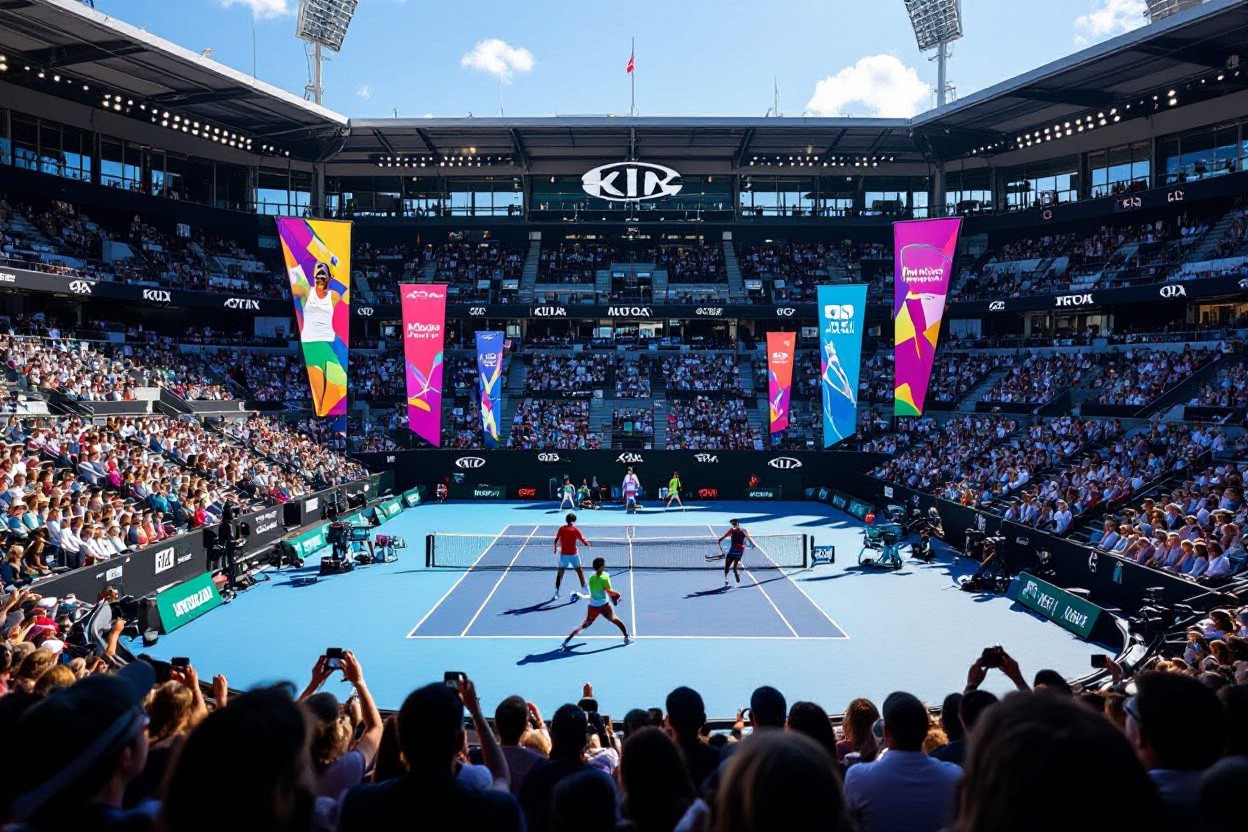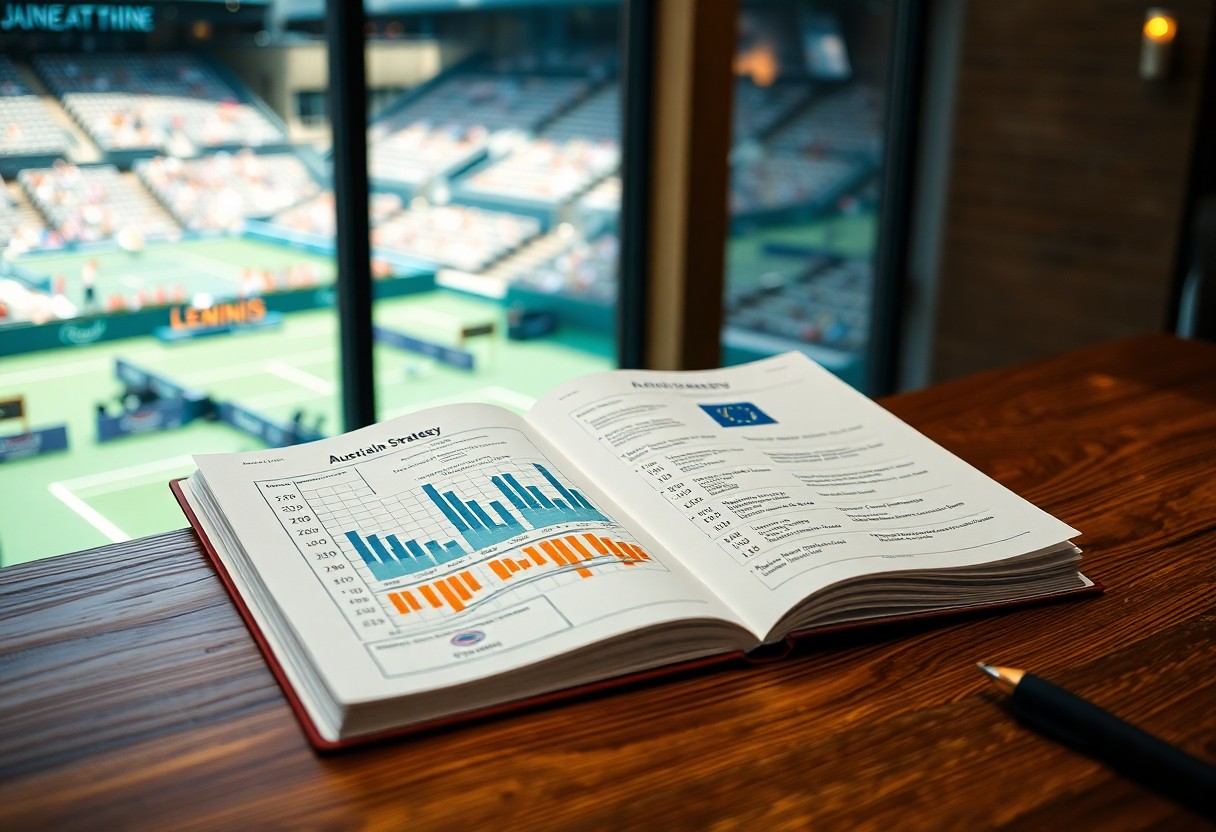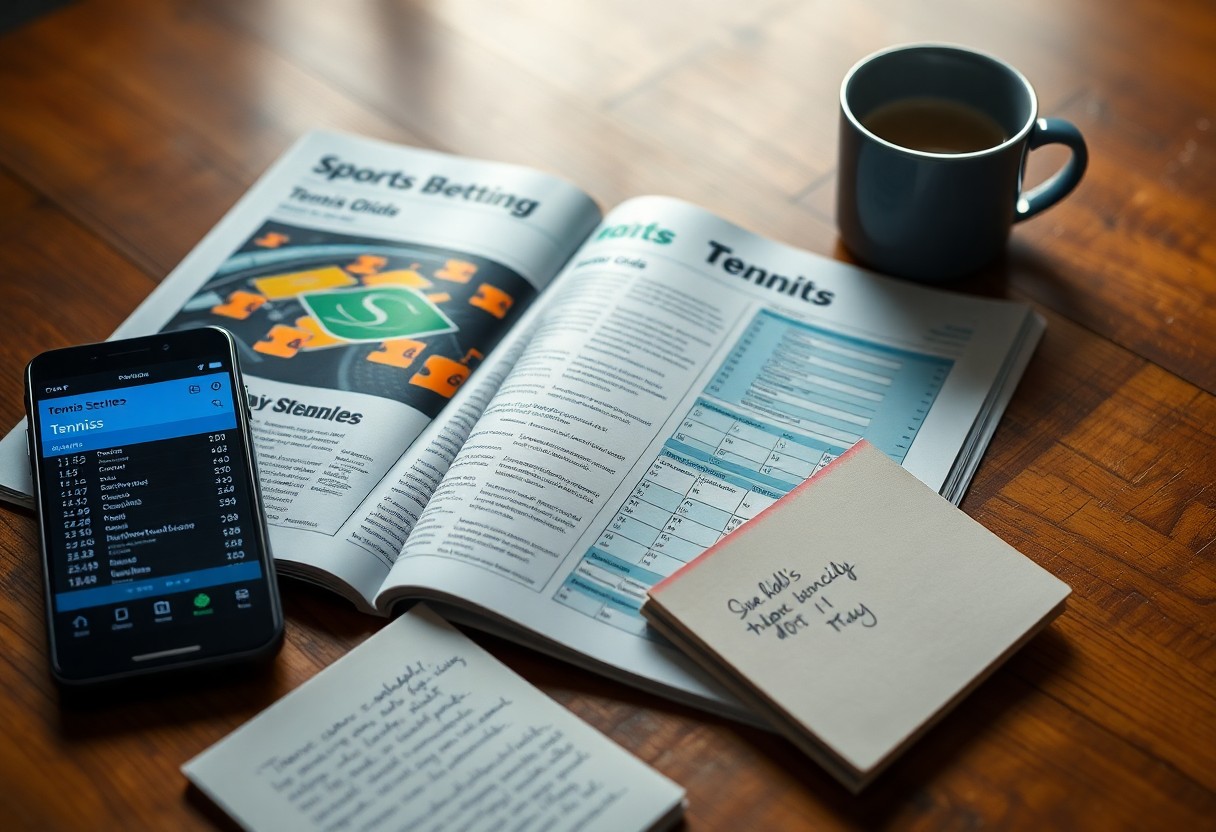You witness how entrances shape matches: at Melbourne Park’s Rod Laver Arena, with 14,820 seats, a warm standing ovation for Federer or Serena can fuel confidence, while Nick Kyrgios’s provocative walk-ons have produced dangerous momentum swings that unsettled top seeds. Match broadcasters, coaches and bookies track these rituals—music choice, handshake hesitation, tempo of steps—because by the time the first serve is struck, your read of the contest has already shifted.
Crafting an Iconic Experience: The Evolution of the Entrance Design
You see the entrance as a performance stage as much as an architectural threshold: designers layered sightlines, signage, and security so every arrival reads perfectly on camera. By the 2010s organizers optimized player procession timing, integrated broadcast-friendly lighting, and expanded VIP flows, turning the walk from tunnel to court into a branded moment that builds anticipation for millions of viewers worldwide.
The Architectural Marvel: Rod Laver Arena
You step into Rod Laver Arena and immediately notice the scale: 14,820 seats wrap around the court and a retractable roof guarantees play in all weather. Opened with Melbourne Park in 1988 and later dedicated to Rod Laver, the venue combines steep sightlines, discreet player circulation routes, and large broadcast gantries that let your live-feed capture both player focus and crowd reaction without disrupting movement.
Key Design Changes Throughout the Decades
You can track the entrance evolution by three concrete shifts: surface and court upgrades (from Rebound Ace to Plexicushion in 2008 and to GreenSet in 2020), the rise of LED scoreboards and dynamic lighting, and the formalization of segregated player routes and secure backstage access for privacy and safety.
During the 1990s you witnessed corporate boxes and media gantries reshape circulation; the 2000s focused on broadcast-ready player presentations and improved acoustics. After 2008 the surface change influenced entrance timing and footwear zones, while the 2010s brought digital ticketing, larger LED façades, and expanded mixed-use concourses. For you that meant faster ingress, clearer sightlines for cameras, and backstage configurations that prioritize both player privacy and fan engagement.
Legendary Moments in Tennis History: The Impact of Player Entrances
You’ve seen how a single walk onto Rod Laver Arena can set the tone: Federer’s composed stride before his 2017 five‑set final with Nadal contrasted with Nadal’s intense routine that preceded the 2012 Djokovic epic. Those entrances became part of the match narrative, turning pre‑match ritual into a psychological weapon and a spectator highlight that echoed through replays and headlines for years.
The Emotional Connection: Fan Reactions and Atmosphere
You feel the arena shift as soon as a favorite appears—the roof closes, crowd noise swells, and every camera angle tightens. With Rod Laver Arena’s ~14,820 seats often filled and the tournament drawing well over 700,000 spectators across the fortnight, an entrance can spark chants, silence, or a roar that changes momentum before the first serve.
You can pinpoint moments where the crowd became a character: during Federer vs Nadal in 2017 the sustained ovation lasted minutes and visibly steadied Federer’s serve, while a raucous local welcome for Evonne Goolagong or Lleyton Hewitt has historically lifted underdogs. Night sessions amplify everything—spotlights, music cues and tens of thousands of watching eyes—so when a player like Serena or Djokovic makes a deliberate, confident entrance you often see an immediate tactical shift as opponents tighten. That emotional feedback loop—player cues, crowd response, opponent reaction—turns entrances into tactical as well as theatrical elements of Grand Slam drama.
Behind the Scenes: Logistics and Preparation for the Entrance
Every entrance hinges on tightly choreographed logistics: you’ll find teams of 30–50 stage, security and broadcast staff managing accreditation, transport windows and dressing-room staging so players arrive exactly on cue. Timelines are precise—security escorts, warm-up time and makeup checks are slotted into a 60–90 second walk-on window—while contingency plans cover delays, medical needs and weather-driven court changes to keep the show on schedule.
The Coordination of Player Introductions
Stage managers and the announcer work with your broadcast control to sync music, camera shots and player entry order; typically 1–2 stage managers and 4–6 court crew handle on-court cues while the player’s liaison escorts them from locker room to tunnel. Live-TV timing forces a strict choreography—announcer copy is trimmed to ~20 seconds, cue lights guide the player, and a standby plan exists if a player is >2 minutes late.
The Role of Technology in Enhancing the Experience
LED ribbons, high-definition cameras and real-time graphics transform introductions, giving your viewers immersive visuals and stat overlays tied to each player’s profile. Production teams rely on 4K cameras, media servers and augmented-reality feeds to align in-stadium spectacle with the international broadcast sent to 200+ territories, elevating the moment beyond a simple walk-on.
Deeper systems work behind that sheen: SMPTE timecode and NTP synchronization link lighting (DMX), video servers (EVS-style playback) and audio so cues fire within hundreds of milliseconds. Redundant fiber links and automatic failover protect your live feed, while Hawk-Eye/graphics engines supply on-screen stats and AR elements; your production truck orchestrates it all, mixing crowd mics, directional audio and camera switching to deliver a seamless entrance every time.
Perspectives from the Players: Testimonials and Insights
Players you follow often reduce the spectacle to one line: the walkout sets the tone. Champions like Serena Williams and Novak Djokovic have described how the charged atmosphere at Melbourne Park and Rod Laver Arena’s 14,820 seats can instantly lift focus or fluster an opponent. Coaches you trust point to those entrances as momentum catalysts that alter tactical choices before the first rally.
Reliving Memorable Entrances from the Players’ Views
Lleyton Hewitt’s combative strolls and Nick Kyrgios’s theatrical arrivals give you clear examples of how personality shapes the room; Ashleigh Barty’s calm, grounded entries showed a different strategy. International stars have contrasted night-session buzz with daytime calm, and you can see on-match behavior change immediately—players either feed the crowd’s energy or work hard to dampen it, with visible shifts in body language and warm-up intensity.
The Psychological Impact of the Entrance on Performance
Psychologists you read link an intense entrance to classic social facilitation: under high arousal, well-practiced skills like the first serve often improve while complex, reactive tasks suffer. Match stats commonly show swings in measurable areas—first-serve percentage, breakpoint conversion, and unforced errors—right after a charged walkout, giving you a clear sense of why the tunnel moment matters.
Mechanisms behind that shift include heightened arousal, crowd-induced distraction, and altered risk-taking: you tend to see increased serve velocity and more aggressive tactics from the energized player, while opponents exhibit tightened movement and more conservative choices. Sports psychologists note this pattern repeatedly, so you can use entrance dynamics strategically—either to amplify your strengths or to deprive an opponent of the crowd-fed edge.
To wrap up
Ultimately you see how the Australian Open’s iconic player entrances have evolved from modest arrivals to choreographed spectacles that shape player identity and fan expectation. As you follow their changing music, fashion, and ceremony, you gain insight into the tournament’s cultural impact, commercial dynamics, and how presentation affects performance narratives. This history informs your appreciation of the Open as both sport and stage.




